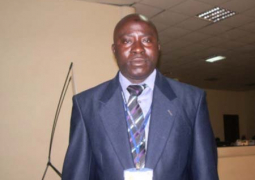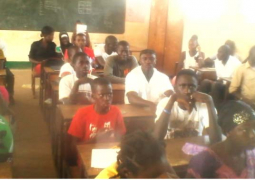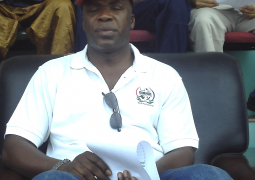
Gambian Women: Profiles and Historical Notes, by Hassoum Ceesay, Fulladu Publishers, 2011, 120 pages.
Hassoum Ceesay belongs to the new generation of Gambian historians dedicated to the complete decolonization of Gambian history. His research interest is women’s history and his first book Gambian Women: an Introductory History (2007) has set the standards in this new area of research in Gambian History. He can rightly be called the pioneer historian in this field of Gambia’ past.
In this new and exhaustively researched book, Hassoum Ceesay picks up the story of women's contribution in the development of this country from where he left off in his previous book, Gambian Women: an Introductory History (2007). Here he profiles Gambian women pioneers in administration, education and politics.
Among women profiled are: Hannah Mahoney, first Gambian woman to work in the Gambia Civil Service in the 1920s (p.25); Ada Beigh, first Gambian woman millionaire (p.11); Musu Kebba Drammeh, the tie-dyer; Juka Jabang, administrator (p.20) and Ralphina de Almeida, pioneer director of the Women's Bureau, Cecelia Cole, former Deputy Speaker in the Second Republic and other deserving women are profiled.
In the second part of this well written book, the author also dissects the critical role of women association in social development in Bathurst between 1930 and 1965. In the last part of the book, we are introduced to some rare historical documents on Gambian women's history dug out of archives in Banjul, London and Freetown. These documents are invaluable primary sources on this interesting aspect of Gambian history.
The book is illustrated with rare archival photos showing Gambian women's participation in various aspects of national development such as education, health and culture. Hassoum has used the tools of the historian to analyse the role of Gambian women in national development in the colonial and immediate post colonial periods. He uses empiric data such as tables, charts to back up his arguments.
As in my first book, I believe that the author is well on the path of advocacy scholarship, or as some historians call it, ‘Engaged scholarship’, because in this book too he intends to 'render audible' the voices, and highlight the careers of the powerless-women-, and also seek to recover their achievements which are usually ignored or downplayed in the annals of Gambian history. This book is therefore an excellent advocacy tool in our struggle for women's empowerment and building role models for girls.
The book is indexed, well referenced and nicely packaged. I recommend it strongly for all students of Gambian history, women's activists and those concerned with the advancement of Gambian women and girl child. Kudos to the author, Hassoum Ceesay for another milestone publication on the contribution of Gambian women to our nation building.
Available at Timbooktoo bookshop.
Read Other Articles In Article (Archive)
D2.7M Non-State Actor Project launched
Apr 6, 2011, 2:50 PM




